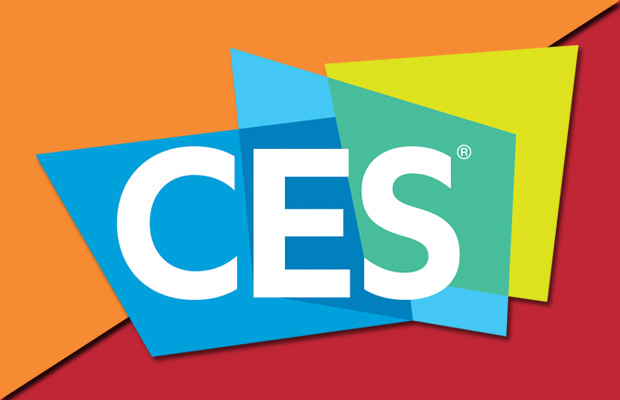CES is in full swing in Las Vegas this week, and the show for all things high-tech — from gizmos and gadgets to cars and entertainment gear — has attracted attendees from around the world. The first CES, or “Consumer Electronics Show” as it originally was known, took place in June 1967 in New York City. It was a spinoff of the Chicago Music Show, which previously served as the main trade event for consumer electronics.
That first show attracted 17,500 attendees and more than 100 exhibitors, making it a sizable trade show for its time. Today that number has grown tenfold.
“This year’s CES is expected to attract more than 170,000 attendees with an estimated total economic impact of (US)$283.3 million,” said Lori fNelson-Kraft, senior vice president of communication and government affairs for the Las Vegas Convention and Visitors authority.
The show was held twice a year in Chicago until 1978 when Winter CES moved to Las Vegas, which has hosted it every year since. Attendance at the summer event declined following the launch of the video game industry’s Electronic EntertainmentExpo (E3), and by 1998 it was consolidated, held once a year with Las Vegas as its home.
CES has become one of the largest trade shows in the world and now takes up to 18 days to set up, run and break down. With so many people converging on Sin City, it is an important event for the local economy.
“Since 1978, CES has drawn 4.7 million visitors to Las Vegas and has had an estimated $5.7 billion economic impact on the destination,” Nelson-Kraft told TechNewsWorld.
Too Big for One Building
What sets CES apart from other trade shows is that it isn’t limited to a single building. It takes over the entirety of the Las Vegas Convention Center (LVCC), as well as nearly a dozen other sites, spanning more than 2.9 million net square feet of exhibit space. It draws in more than 4,500 companies.
The show requires thousands of support staff to set up, break down and run it. Bus drivers are recruited from across the U.S. to help the crowds move around town.
CES 2020 will be the last one held at the LVCC before a 1.4 million-square-foot, $1.5 billion expansion and remodeling project is completed later this year. Following this expansion, the show could consolidate to the LVCC and not require press conferences to be held offsite or for so many events to spill over to the Westgate Las Vegas Resort & Casino, the Sands Expo and Convention Center, and The Venetian Resort.
Those locales host reasonably large trade shows in their own right, but CES simply continues to grow. It began as a trade show for consumer electronics that included stereos, TVs, and appliances, but it now encompasses much more.
“CES covers all aspects of consumer technology, from automotive to mobile connectivity and everything in between,” said Consumer Technology Association spokesperson Tyler Suiters, vice president of communications.
“It is different from niche or regional shows which attract only regional audiences or showcase only a few specific segments of the tech industry,” he added.
The show’s organizers have done a good job in some respects.
“The layout of the show at the LVCC is organized linearly — with similarly focused vendors grouped together,” said Charles King, principal analyst at Pund-IT.
“That helps minimize confusion, but the logistics of dealing with thousands of vendors and tens of thousands of other attendees is challenging, at best,” he told TechNewsWorld.
“Trying to engage in effective meetings or meaningful discussions at the LVCC is difficult or impossible depending on the time of day and size of the crowds around you,” King added.
Can It Get Bigger?
With the LVCC expansion, CES, in theory, could get even bigger. Because it now covers more than consumer electronics — which is why the name “Consumer Electronics Show” has been dropped — anything that powers on in some form or fashion can be a fit for CES.
“We’re seeing more attendance from the automotive sector,” said Marge Costello, industry analyst and editor of CEON, Consumer Electronics Online News.
In fact, the automotive category has become so important that the show essentially has replaced the North American International Auto Show (Detroit Auto Show) as the first auto show of the year, which led to NAIAS moving its event to June.
“Automotive has become a centerpiece, and the fact that a relatively new market area for CES takes up an entire hall of the convention center says a lot about the value of the show, at least for those players,” said Eric Abbruzzese, research director at ABI Research.
“It’s a standout for starting the year with a bang and possibly allowing companies to carry momentum through the year,” he told TechNewsWorld.
Yet the size of CES has many asking whether it has become too inclusive of what it tries to cover, too overlapping with other tradeshows — and, most importantly, too big.
“You could have asked that question for years. It is very diverse, and by all accounts it is going to be even bigger next year,” CEON’s Costello told TechNewsWorld.
It isn’t just the official events either. Many non-official events, mini-conferences, and company-specific gatherings are scheduled, making it impossible to see everything. For the small vendors, just being noticed could become all but impossible!
“As one of the most prominent trade shows, CES is awash with press conferences and no shortage of dizzying gizmos and gadgets, that makes it harder than ever to stand out from the crowd,” said Scott Steinberg, principal analyst at TechSavvy Global.
“At the same time, small companies and PR firms can use grassroots strategies and clever tactics to stand out from the mainstream PR channels,” he told TechNewsWorld. “If you go through the normal channels, you will be lost in the sea of news, but if you are clever, you can stand out and make a big splash this week.”
Plan Accordingly
CES is not a consumer event — it is not open to the public in any way — but it truly pulls out all the stops. Its numerous keynotes have become media spectacles, with multiple speakers and endless product unveilings.
“The keynotes aren’t really new, but they get bigger each year, and many of the products demonstrated at these events won’t see the light of day,” Costello pointed out.
For electronics products making their way to the market, CES is still where the key reveals are staged.
“While there is an overwhelming amount to see, attendees have to be selective,” said Roger Entner, principal analyst at Recon Analytics.
“In a way, it’s not one show, but multiple shows that are happening at the same time in the same place,” he told TechNewsWorld.
That said, “one can successfully leverage the huge number of people attending,” Entner added.
“An investment bank is even holding one of its events in Las Vegas concurrently with CES because they can get more top-level executives to attend their event that way,” he noted.
It’s unlikely that just being there will result in a lot of walk-in traffic, though.
“Most of the buyers and media are focused, and that means they participate in the part of the show they are interested in,” said Rob Enderle, principal analyst at the Enderle Group.
That “mitigates substantially the disadvantages due to the show’s size,” he told TechNewsWorld.
These days it’s difficult for anyone to make a big splash at CES, however.
“It’s not the little guys that get drowned out any more than before but the big guys,” said Recon’s Entner. “That’s why they are not announcing major products anymore. The little guys are drowning out themselves, but if they get recognition at CES it’s huge for them.”
Travel Woes
It’s ironic that CES serves as the first “auto show” of each year, given its traffic headaches, long cab lines, and all the related gridlock that comes with adding the equivalent of a medium-sized city to the population of Las Vegas for a week.
“One of the big problems is moving between the convention centers. You’d think Las Vegas would suspend road work during this week, but every year they seem to go out of their way to make driving during this show more difficult, not less,” commented Enderle.
“The CES team does a superhuman job keeping this thing from imploding, but world events, timing, and that clear lack of necessary infrastructure support all suggest this event is at an increased risk of failure over time — and eventually, one of these problems is certain to cause a catastrophic failure,” he added.
The planned LVCC expansion could centralize the show, but it may not make things easier immediately.
“If CES is too large now, it will stretch the limits at next year’s show when the very large, new West Hall opens on the LVCC campus in time for CES 2021,” said Costello.
Here is where technology could actually help the world’s largest tech trade show.
“To connect the new hall, Las Vegas has contracted Elon Musk’s TheBoring Company to build an underground people mover featuring autonomous vehicles,” Costello said.
The project, which began in November, will cost a reported$52.5 million and take 14 months to complete. It will involve a massive tunnel dug 40 feet under the existing LVCC, which will reduce a 15-20 minute walk from one end of the complex to just about a minute and a half. Each autonomous transport vehicle reportedly will carry up to 16 passengers, and multiple vehicles can be connected like a train during heavy operational times.
Las Vegas city planners have suggested that the city’s monorail can help alleviate the road congestion by transporting attendees from various hotels on Las Vegas Blvd. — aka “the Strip” — to the LVCC. However, even running at peak capacity, it quickly can get overwhelmed by the sheer number of show attendees trying to move from point A to point B.
“Las Vegas does this sort of thing as well or better than just about anywhere else in the U.S., but the fact is that CES more or less ‘broke’ the supporting infrastructure years ago,” noted Pund-IT’s King.
“That’s when events increasingly moved away from the LVCC to MandalayBay, which mostly hosts large-scale press events; the Sands ConventionCenter at the Venetian/Palazzo complex; and various hotels on the Strip,” he explained. “A number of invitation-only product showcases for the media and analysts, like CES Unveiled, make detailed discussions easier — but they also add to the costs vendors bear.”
Future CES
Is it fair to say that CES has gotten too big to succeed? If so, what is its future?
“That depends on the goals of the event. In essence, CES is a tradeshow where manufacturers of electronics and digital devices that will be used by consumers or consumer service providers promote the products they’ll introduce in the coming year,” said King.
“To that end, they use it to connect with the people and companies that will sell their products, as well as with members of the press they hope will provide free exposure, promotion, and advertising,” he added.
Whether the show has become too daunting for attendees is the question.
“Getting your arms and head around the entire show is effectively impossible — there’s just too much to see and do in far too many places,” said King.
If attendees can limit their focus to a few specific product lines or vendors, CES can be a great place to see coming wares and products.
“It’s also wise to keep in mind that CES is and always will be an event that promotes what electronics manufacturers and the umbrellaCTA organization hope and pray will open buyers’ minds and wallets in the coming year,” King suggested.
If it does get too big, some of the companies may opt to go their own way — something that has happened with other trade shows.
“There’s a danger of oversaturation, with announcements lost among the incredible amount of noise,” said ABI Research’s Abbruzzese.
“We may see some movement away from CES as the primary show and have companies host their own events or favor other shows in order to avoid that,” he said. “I think about E3 in the gaming space and how a number of major gaming companies have pulled out in favor of their own streams, shows, and announcement strategies.”
It is true that Apple doesn’t have much presence at CES, but for most consumer electronics companies the show will remain the place to be.
“There’s no better show than CES for getting a lot of information to a lot of people very quickly,” added Abbruzzese, “so I don’t see it shrinking anytime soon.”
Going Virtual
Beyond the question of the show’s size, there is the fact that some of the events can be broadcast online, allowing the opportunity for virtual attendance.
Thus technology may dictate the future of the show. The ability to see the latest gizmos on the very UHD/4K sets that were unveiled just a decade ago, and to tour a booth virtually raises the question of whether CES eventually could become an online experience.
“At some point, this show will become virtual as it simply can’t continue to grow without more support from the city,” Enderle maintained.
“Also, the size of the event, and guest speakers like the First Lady, make it an attractive target during these hostile times,” he pointed out.
“This massive overcrowding would make safe evacuation nearly impossible, which also highlights another way this show could dramatically end,” Enderle added.
“Finally, the show is ill-timed for consumer products, given it comes so closely after Christmas and so far away from the next buying season,” he said. “This timing leads to an excessive number of off-premises confidential events, as vendors try to engage buyers but try to prevent the premature release of information about yet-to-be-announced products.”























































